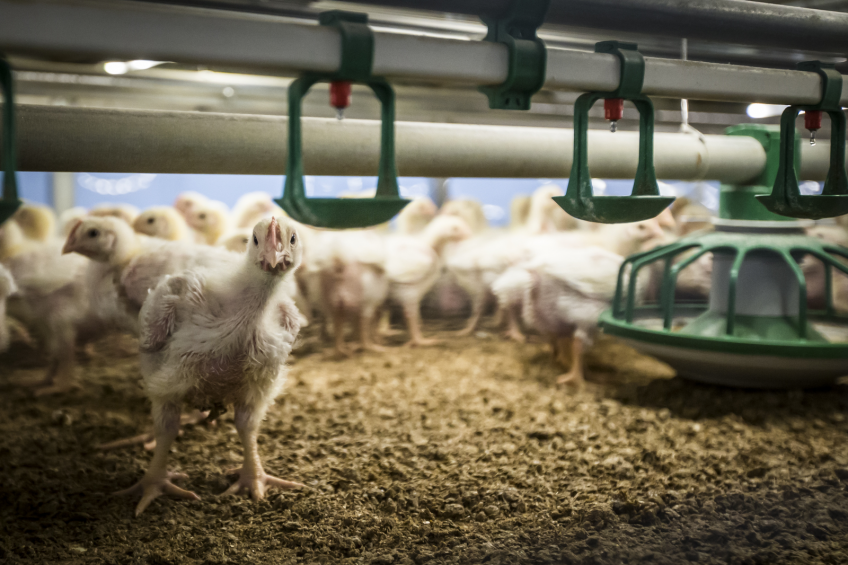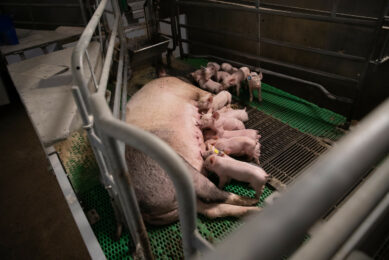Supporting poultry gut health with essential oils

The need to produce more high quality protein, more quickly against a challenging backdrop has led researchers to look for efficacious means of supporting healthy bird performance through the use of certain feed additives. Essential oils are one of the tools available to support the challenges faced by those in the poultry sector.
Poultry producers in many parts of the world are facing profound changes such as the introduction of new welfare regulations, higher consumer demand for safe meat and calls for the reduction of therapeutic antibiotics. The ultimate aim of poultry farmers, of course, is to achieve uniform growth and healthy bird performance in a sustainable, profitable way. Robust performance throughout the lifecycle, not only to get broilers to market more quickly but to also ensure their livability is critical. The importance of developing a harmonious relationship between the gut microbiota and a chick from the outset is particularly important. Poultry flocks reared under practical conditions, have to cope with different stress factors that have the potential to compromise bird health. Feed transitions can lead to sub-optimal performance, as can changes in climate conditions, mycotoxins in raw materials and adverse reactions to vaccinations. In intensive environments, the development of a healthy gut is a challenge but is critical because non-beneficial bacteria present in the litter can rapidly multiply in the young bird’s gut, and impact its health and welfare.
Achieving strong performance growth
Within two to three weeks – depending on nutrition and brooding conditions – the typical adult broiler small intestinal microbiota should also be well established and the challenge is achieving strong performance growth in as little time as possible by maximising nutrient output. In the past, sub therapeutic use of antibiotic growth promoters (AGPs) would be used to improve performance, a practice that has been common in the poultry industry since Moore et al first reported weight gain in chickens in 1946. However, as Fleming had himself warned in his 1945 Nobel Prize speech, using non-lethal doses of antibiotics enables surviving bacteria to reproduce with genes that confer resistance. This means that poultry have become immune to the effects of most commonly used antibiotics.
The need for change is obvious. Regardless of whether AGPs are being used or not, there is often a gap between observed commercial performance and the animals’ genetic potential. It is clear that a solution is needed to both manage and balance the bird’s microbiota while also compensating for reductions in antibiotic growth promoters in terms of the bird’s performance. Research has shown that supporting the gut can allow the animal to deal more efficiently with potential infections and environmental challenges as any breach in the integrity of the gut could have consequences on the animal’s health status.
Essential oils are a possible solution
Cargill Animal Nutrition has been investigating the use of non-medicated feed additives for several years as an alternative to antibiotic growth promoters. Since 2009, a combined total of 77 in vitro and in vivo trials have been conducted in their innovation and technical application centres worldwide. This research showed that selected blends of essential oils (EO) – known as essential oils compounds (EOC) – had the most comprehensive effect on overall digestive health. While additives like probiotics provided some benefit in at least one of the four key functionalities of the gut, EO/EOC exhibited the broadest range of benefits (Figure 1) including antimicrobial and antioxidant activity.
Figure 1 – Gut functions and key objectives of a digestive health support program.

EO-based products currently in the market can be divided into two major categories: pure plant extracts or essential oils and controlled blends of essential oils compounds. EOC products can leverage the biological properties of different types of essential oil components in order to create blends that will specifically address production challenges. In this respect, they are often the best solution for poultry producers. The best solution has also to be easy to handle in production while also accessible to the bird so encapsulation or, even better, advanced stabilisation technologies should be used in production.
Research has also shown that essential oils were the only alternative to offer both a broad spectrum of activity against non-beneficial bacteria and a direct impact on digestive function. Evidence also suggests that the carrier of the essential oils compounds is extremely important and that combining essential oils with lower levels of organic acids (OA) provides greater support for healthy performance than if the additives were applied individually (Figure 2a and 2b).This effect could be explained by the fact that EO/EOC disrupt cellular membranes and facilitate the diffusion of organic acids into the bacteria. Furthermore, the hydrophobicity of EO/EOC is enhanced at low pH values, so the presence of acidifiers may also improve these compounds’ ability to increase the permeability of bacterial membranes. The combination of EOC and OA works by stimulating the chickens’ digestive functions and by supporting gut microbiota balance. Evidence shows that healthy performance could be considerably improved using the same combination. EOC and OA help improve weight gain and feed conversion rates (FCR) without AGPs.
Figures 2a and 2b – Effects of essential oil compounds (EOC) used alone or in combination with organic acids (OA) on bacterial growth inhibition in-vitro and broiler performance (source: Provimi* trials).

Synergistic effects against certain pathogens
Reviews from Langeveld et al. (2014) and Yap et al. (2014) also revealed that several EO/EOC and antibiotic combinations showed additive or synergistic effects against a range of pathogenic bacteria relevant to livestock operations. As most antibiotic classes used in animal production act inside the cell (and not at the membrane level), it is likely that EO/EOC may facilitate their diffusion into the bacteria. In addition, it is possible that the combination of EO/EOC and antibiotics could reduce the cell’s resistance mechanisms. So a solution that was designed to reduce the need for antibiotic growth promoters can actually work in harmony with them, unless of course you live in a region where therapeutic, sub-therapeutic and prophylactic use of antibiotics is banned. For many, this gradual path to an antibiotic-free future can help them maintain profitability and performance without radically changing the way they do business.











